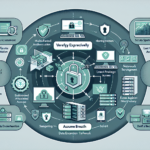As an IT manager responsible for a wide range of technologies, including data centers, storage, backup, servers, virtualization, operating systems, Kubernetes, AI, and IT infrastructure, automation is crucial to improving efficiency, reducing manual effort, and ensuring consistency across your environment. Here are some of the best tools for IT infrastructure automation:
Configuration Management and Automation Tools
- Ansible:
- Agentless and uses YAML for configurations.
- Ideal for managing servers, network devices, containers, and storage.
- Provides integration with Kubernetes and cloud platforms.
- Terraform:
- Infrastructure-as-Code (IaC) tool for provisioning and managing infrastructure across multiple cloud providers (AWS, Azure, GCP, etc.).
- Excellent for managing resources like VMs, networks, storage, Kubernetes clusters, etc.
- Chef:
- Configuration management tool using code written in Ruby.
- Designed for automating infrastructure, application deployment, and configuration.
- Puppet:
- Great for managing configuration drift in large-scale environments.
- Offers both an open-source and enterprise edition.
- SaltStack:
- Highly scalable tool for configuration management and orchestration.
- Suitable for both on-premises and cloud environments.
Container Orchestration and Kubernetes Management
- Kubernetes:
- Industry-leading container orchestration platform.
- Automates deployment, scaling, and management of containerized applications.
- Use tools like Helm (package manager for Kubernetes) and Kustomize for automation.
- Rancher:
- Simplifies Kubernetes management across multiple clusters.
- Provides UI-driven automation for cluster provisioning, scaling, and monitoring.
- Kubectl (Command-line tool):
- Core tool for managing Kubernetes clusters.
- Combine with scripts and CI/CD pipelines for automation.
- Cluster API:
- Kubernetes-native tool for automating the lifecycle of Kubernetes clusters.
Backup and Recovery Automation Tools
- Veeam:
- Provides automated backups and disaster recovery for virtualized environments.
- Works seamlessly with VMware, Hyper-V, and physical servers.
- (Note: Can’t backup physical SQL databases as we want)
- Rubrik:
- Offers API-driven backup and recovery solutions with automation-friendly features.
- Integrates with Kubernetes and cloud-native applications.
- Commvault:
- Enterprise-grade backup solution with robust automation capabilities.
- Supports hybrid and multi-cloud backup automation.
Monitoring and Observability Tools
- Telegraf and Grafana:
- Prometheus for monitoring metrics and Grafana for dashboard visualization.
- Automate alerts and monitoring for infrastructure and Kubernetes clusters.
- Nagios:
- Open-source tool for monitoring servers, applications, and network devices.
- Automation capabilities via plugins and scripts.
- Zabbix:
- Open-source monitoring tool with extensive automation features.
- Supports triggers, templates, and auto-discovery.
Virtualization and Cloud Automation Tools
- VMware vSphere/vRealize Suite:
- vSphere for virtualization management and vRealize Suite for automation, monitoring, and orchestration.
- Automates VM provisioning, scaling, and resource allocation.
- AWS CloudFormation / Azure Resource Manager (ARM) / Google Cloud Deployment Manager:
- Native IaC tools for automating cloud infrastructure deployment.
- HashiCorp Nomad:
- Lightweight orchestrator for managing containerized and non-containerized workloads.
Networking Automation Tools
- Cisco Ansible Networking:
- Extends Ansible for automating network device configurations.
- Works with Cisco switches, routers, and firewalls.
- NetBox:
- IP address and network inventory management tool with automation APIs.
- Apstra:
- Intent-based networking automation for data centers.
AI and GPU Infrastructure Automation Tools
- NVIDIA NGC:
- Automates AI workloads and GPU infrastructure management.
- Provides pre-trained models, containers, and tools optimized for NVIDIA GPUs.
- Kubeflow:
- Kubernetes-native platform for automating machine learning workflows.
- MLflow:
- Open-source tool for managing ML lifecycle and automating experiments.
CI/CD and DevOps Automation Tools
- Jenkins:
- Widely used open-source CI/CD tool for automating build and deployment pipelines.
- GitLab CI/CD:
- Integrated CI/CD pipelines that work seamlessly with GitLab repositories.
- ArgoCD:
- GitOps tool for managing Kubernetes deployments.
- Spinnaker:
- Multi-cloud continuous delivery platform for automating application releases.
General Automation Frameworks
- PowerShell DSC (Desired State Configuration):
- Automates Windows infrastructure management and configuration.
- Bash/Python Scripts:
- Custom scripting for specific automation needs across Linux and Windows environments.
- RunDeck:
- Offers orchestration and automation of operations tasks across hybrid infrastructure.
Factors to Consider When Choosing Tools
- Scalability: Ensure the tool can scale with your environment.
- Ease of Use: Look for tools with straightforward configuration and management.
- Integration: Choose tools that integrate well with your existing systems (e.g., Kubernetes, VMware, cloud platforms).
- Community Support: Tools with active communities are more likely to offer timely updates and support.
- Cost: Consider budget constraints and licensing requirements.
By leveraging a combination of these tools, you can automate routine tasks, reduce downtime, and optimize the performance of your IT infrastructure.
The best backup tool is Commvault for all enterprise product, if you use only virtulization you can use Veeam or Rubrik

Ali YAZICI is a Senior IT Infrastructure Manager with 15+ years of enterprise experience. While a recognized expert in datacenter architecture, multi-cloud environments, storage, and advanced data protection and Commvault automation , his current focus is on next-generation datacenter technologies, including NVIDIA GPU architecture, high-performance server virtualization, and implementing AI-driven tools. He shares his practical, hands-on experience and combination of his personal field notes and “Expert-Driven AI.” he use AI tools as an assistant to structure drafts, which he then heavily edit, fact-check, and infuse with my own practical experience, original screenshots , and “in-the-trenches” insights that only a human expert can provide.
If you found this content valuable, [support this ad-free work with a coffee]. Connect with him on [LinkedIn].






Very informative! It explains how automation tools make IT work faster and easier, helping teams manage everything smoothly without much manual effort.